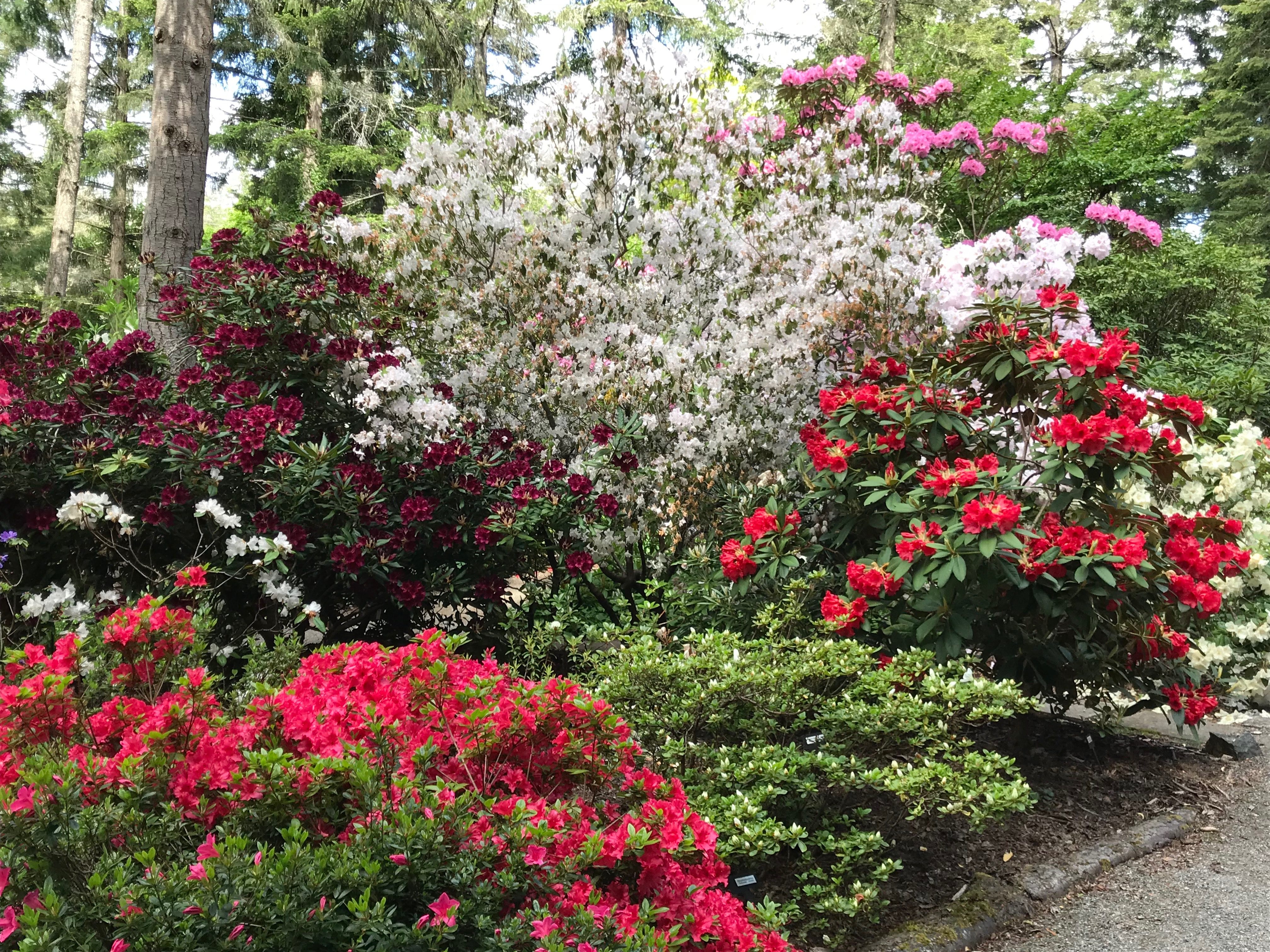Rhododendrons - Student Blog

By: Shy Hodgkinson and Bekki Isles
Nowadays, it seems like wherever you look in Victoria and the surrounding area, you're going to find a rhododendron of some sort. This genus of perhaps 900 species and 25,000 registered hybrids are predominately found in Asia, due to their preference of temperate to subtropical settings- however there are about 3000 that are commercially imported. The reason for so many hybrids? The mountain ranges where rhododendrons can usually be found have not only high peaks, but very low valleys that can sometimes fill with ice, causing the species on one side of the valley to not receive pollen from species on the other side, leading to each side breeding among themselves. In China, they are found in the wild at ranges between 6000ft (where they stand like giants at up to 30m) to 40,000 ft (can be mere cm tall). Not only are these plants ancient- they have found fossils dating back 60 million years ago- beautiful, with wide variety of foliage and flower colours/sizes/shapes.
All of the subgenus's; HYMENANTHES (no scale)- is the most common type of rhodo planted in Victoria. PENTANTHERA (deciduous azaleas), RHODODENDRON (with scales), and Tsutsutsi (evergreen azaleas) all have similar needs and requirements.
Here's how to ensure that you too can have a beautiful, lush, Rhododendron:
Rhododendrons are abundant in Victoria, because they are a reliable evergreen shrub that the deer do not eat. To pick out a new rhodo for you garden, go to the nursery to see what they've got. If you start looking around online you will likely find some very handsome plants but those exceptional ones are hard to buy. Choose for flowers, interesting foliage, and size. Size is the most important factor for maintaining in your home garden. Make sure the space you want to plant in has good well-drained soil, as rhodos hate wet feet. About half and half sun to shade mix is ideal, try to keep your shrub protected from harsh afternoon sun and strong winds though. The smaller the foliage, the hardier it will be is a general rule of thumb. Do not plant it too deep, best to plant a little high and mound up the soil around the root ball for best drainage and to prevent it sinking too deep after compaction occurs.
Once you've planted your brand new rhodo and it comes around the time to maintain it, consider these helpful tips:
- Rhodos will benefit from natural forest like conditions: leaf mulch is your friend. Up to 4” around the root zone, but make sure not to touch the trunk with any mulch or it will rot the bark and kill your shrub.
- Fertilization can be done about twice a year, once right after the flowers are done, and again in the winter when nutrients are being leached away by our heavy rains. A slow release 10-8-6 can be used, compost tea is also beneficial.
- Pruning can be done anytime before the dry season starts, typically March to the end of May. Prune for size, shape, health, and appearance. In extreme cases, some rhodos can be coppiced right to the ground to give them a fresh start. To be safe, check around for your specific species before making that kind of drastic cut!



